المحاكمة التي تبدأ قريباً للمذيع جوشوا آراب سانغ تطرح أسئلة جوهرية حول العلاقة بين الكلمات والعنف. هذا ما تناقشه كاثرين بروس-لوكهارت في هذه المادة.

خطاب الكراهية، أو الخطاب الذي يحطّ من قدر الناس على أساس عضويتهم في جماعة، لطالما قد أقلق صانعي القرار، وتسبب في جعل حدود حرية التعبير محطّ إعادة تداول مستمرة. المناظرات حول خطاب الكراهية تتصدر عناوين الصحف بانتظام، بحيث تشتمل بعض حالاتها الحديثة المظاهرات المعادية للمثليين في الجنازات العسكرية من قبل كنيسة ويستبورو المعمدانية، وقيام رئيس رابطة الشباب في حزب المؤتمر الوطني الإفريقي، جوليوس ماليما، بالترويج لأغنية »أطلق النار على البوير« (البوير: تحيل بصورة عامة إلى جماعة البيض في جنوب إفريقيا). على الرغم من أن استعمالات كهذه لخطاب الكراهية تسبب إساءات معتبرة، فإنها لا تؤدي دوماً بشكل مباشر إلى إثارة العنف. الدارسون المهتمون بالبحث حول حرية التعبير يبذلون محاولات متزايدة لتبيّن متى يتحوّل خطاب الكراهية إلى »خطاب خطير«: أي خطاب له »فرصة معقولة في تحفيز أو تضخيم العنف من قبل مجموعة ضد أخرى«. لقد خرجت عالمة السياسية سوزان بينيش بخمسة متغيرات نوعية أساسية لتمييز خطورة الخطاب، لتعرض نموذجاً لتحليل دراسات الحالة الخاصة بخطاب الكراهية. تتضمن هذه المتغيرات مستوى التأثير الذي يمتلكه المتحدث، مظالم ومخاوف الجمهور، إذا ما كان فعل الخطاب يُفهم كدعوة إلى العنف أم لا، السياق الاجتماعي والتاريخي، والطريقة التي يتنشر عبرها الخطاب.
راوندا وكينيا، كلتا الدولتين اللتين عانيتا من عنف ملحوظ خلال العقدين الفائتين، تعتبران حالتي دراسة مفيدتين لتبيّن متى وكيف يمكن أن يتحوّل خطاب الكراهية إلى خطاب خطير. الدور التحريضي لمحطة الراديو إذاعة وتلفزيون ليبر دي ميل كولين (راديو RTLM) في الإبادة الجماعية في راوندا هو أمر تم ثويقه على نطاق واسع، ويقدّم مثالاً حاسماً عن الخطاب الخطير. »الراديو شجّع الناس على المشاركة لأنها قالت بأن ’العدو هو التوتسي ‘«كما علّق أحد الناجين من الإبادة. »لو أن الراديو لم تعلن الأشياء، لما كان الناس قد انخرطوا في الهجمات«.
هذه الرؤى قد تم تدعيمها منذ ذلك الحين بالدلائل الكمية التي أظهرت كيف أن خطاب الكراهية من قبل رايدو RTLM زاد المساهمة في أعمال عنف الإبادة. في دراسة عن راوندا، استخدم عام السياسة من جامعة هارفرد دايفيد ياناجيزاوا-دروت قواعد بيانات عن عنف الإبادة الجماعية من أكثر من ألف قرية ليحدد أثر تغطية الراديو على المشاركة في العنف. النتائج التي توصل إليها لها مفعول إرشادي للباحثين الذين يدرسون خطاب الكراهية. فقد ازداد العنف المدني بمعدل خمس وستين بالمئة والعنف المنظم بنسبة سبع وسبعين بالمئة لدى المجتمعات التي كان لديها تغطية كاملة من الراديو. بصورة عامة، يقدّر عالم السياسة المذكور أن تسعة بالمئة من قتلى الإبادة الجماعية، أو ما يعادل قتل خمس وأربعين ألفاً من التوتسي، يمكن عزوه إلى أعمال عنف قام بالتحريض عليها راديو RTLM. هذه الإحصائية تشير إلى قوة الخطاب الخطير في ترجمة الكلمات إلى أفعال يمكن أن تكون نتائجها مميتة بالنسبة لأولئك الذين يعيشون في بيئات خطيرة.
للحؤول دون الخطاب الخطير، من الواجب محاسبة الجناة- وهي مهمة تتطلب أدلة ملموسة تظهر بأن الخطاب يمكن يقود إلى العنف. هناك سوابق قانونية لهذا، ومنه المحكمة الجنائية الدولية الخاصة براوندا، حيث وجد المدعون العامون أن أفراد ينتمون إلى راديو RTLM مذنبون بالدعوة »جهارةً لإبادة مجموعة التوتسي الإثنية«. المحكمة الجنائية الدولية تتعامل حالياً مع أول حالة لديها من الخطاب الخطير والمتورط بها مذيع الراديو الكيني جوشوا آراب سانغ. فبعد عنف ما بعد الانتخابات الواسع في عامي 2007 و 2008، كان سانغ واحداً من أربع كينيين تمّ استدعاؤهم للمحاكمة من قبل محكمة الجنايات الدولية على أساس جرائم ضد الإنسانية. سانغ الذي يعمل مذيعاً في إحدى الراديوهات الناطقة بلغة الكالينجين (إذاعة كاس Kass) هو المدعى عليه الوحيد الذي ليس سياسياً (الرئيس الحالي أوهورو كينياتا ونائب الرئيس ويليام روتو أيضاً قيد الاتهام)، بما يجعل حالته مثيرة للاهتمام للباحثين المهتمين بحرية التعبير. وقد تم توجيه تهم لسانغ تشمل القتل، التهجير والنقل القسري للسكان، والإضطهاد.
محاكمة سانغ التي تبدأ في الثامن والعشرين من مايو/أيار 2013 هي اختبار حقيقي لقدرة محكمة الجنايات الدولية على إثبات الارتباط بين الخطاب والأفعال العنيفة. حالة سانغ تبدو أنها تحقق الشروط المطلوبة في نموذج (العالمة) بينيش كمثال على الخطاب الخطير. كمتحدث، يمتلك سانغ نفوذاً كبيراً ضمن مجتمع الإثنية الكالنجية. فبرنامجه يصل يومياً إلى جمهور كيني من أربع ملايين ونصف إضافة إلى مستمعين آخرين من الشتات الكالينجي. كما أنه كان لجمهوره مظالم حرجة بحيث أنهم كانوا مؤمنين بأن الانتخابات تمّ تزويرها ضد رايلا أودينغا المرشح المدعوم من معظم الكالنجيين. أسلوب خطاب سانغ يمكن أيضاً المجادلة بأنه دعوة إلى استخدام السلاح. فهو متصل بعبارات مثل »لقد بدأت الحرب« و»الناس جماعة الحليب« يجب »أن يقصوا العشب«، وهي مصطلحات محلية تشير إلى الكالنجيين الذين يربون الماعز (وهي جماعة سانغ الإثنية) وجماعة الكيكويو المزارعة (وهي الجماعة الإثنية التي تم استهدافها من قبل داعمي سانغ). السياق الاجتماعي-التاريخي كان محابياً أيضاً للصراع حيث أن كينيا كانت قد خبرت العنف خلال كل انتخابات منذ 1992، وكان الكالنجيون والكيكويو لفترة طويلة متنازعين حول الأراضي. بالنهاية، الراديو هي وسيلة نافذة من وسائل الاتصال في كينيا، فهي وسيلة الاتصال الأساسية المتوفرة باللغات المحلية الإقليمية، ولذلك فهي أكثر سهولة للمنال من غيرها من وسائل الإعلام من قبل المواطنين الأقل تعليماً والذين يعيشون في المناطق الريفية.
على الرغم من أن حالة سانغ تبدو أنها تلائم التصنيف ضمن الخطاب الخطير، فإن النتيجة المحتملة لمحاكمته بعيدة كل البعد عن القطعية. بخلاف حالة رايدو RTLM في راوندا، هناك القليل فقط من التسجيلات من البرنامج الذي كان يذاع على راديو كاس (برنامج سانغ) خلال الانتخابات. كما أن خطاب الكراهية، بحسب هيومان رايتس واتش، صدر بالغالب عن ضيوف متحدثين، وليس مذيعين، بما يجعل خيوط تحديد الذنب ضبابية. يعاند سانغ بخصوص براءته كما أنه استقدم محاججات متعلقة بحرية التعبير للدفاع عن نفسه. فكما تقتبس كيث سوميرفيل في كتابها راديو بروباغاندا وإذاعة الكراهية لعام 2012، يجادل سانغ بأن حكماً عليه بالذنب سيكون له أثر ضار على حرية التعبير: »إذا تم اقتيادي إلى لاهاي مع أنني أعلم بأنني كنت أقوم بعملي بمهنية، ماذا الذي يكونون يقولونه للصحفيين؟« نتيجة محاكمة سانغ من المحتمل أن يكون لها أثر كبير على حرية القنوات المحلية في كينيا، كما أنها ستقدم مساهمة لمفاهيم أوسع عن الخطاب الخطير في سياقات عنيفة.
في النهاية، هناك ضرورة لمزيد من البحث والمناظرات لتحديد الفرق بين خطاب الكراهية والخطاب الخطير. سواء في راوندا، كينيا أو بلدان أخرى قد خبرت مؤخراً عنفاً هائلاً، فإن توضيح صنف الخطاب الخطير هو مجهود جوهري هام. تحديد متى ولماذا وكيف يخدم الخطاب كمنصة للعنف سيظل قضية شديدة التحدي لكن جوهرية في المناظرات حول حرية التعبير والجهود المبذولة لكبح جماح العنف.
كاثرين بروس-إنغلهارت هي من دارسي برنامج داريندورف. حصلت على شهادة الماجستير في الدراسات الإفريقية من كلية سانت أنتوني في جامعة أوكسفورد. عملت كصحفية في كندا وجنوب أفريقيا، كما أنها أجرت بحوثاً وبرمجة مع منظمات غير حكومية تعمل على حرية التعبير في ناميبيا، نيبال وكندا.

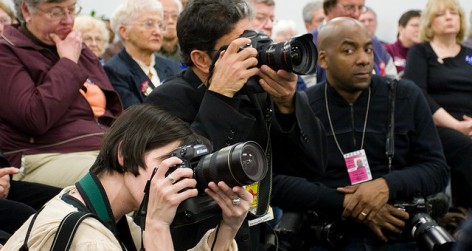
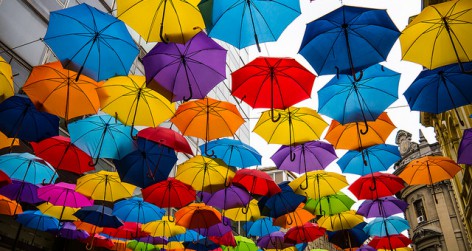

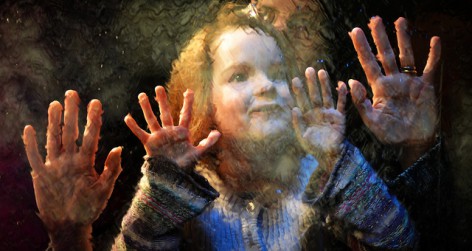
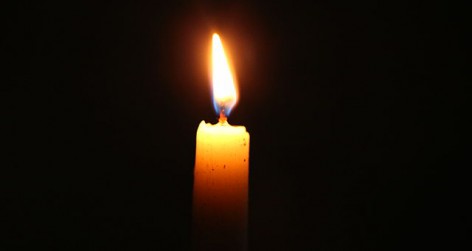

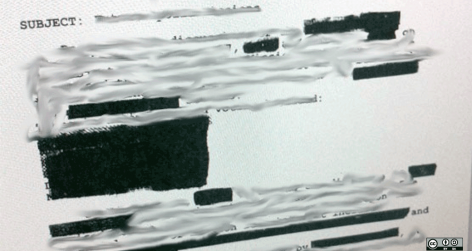
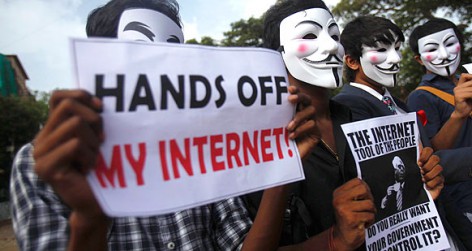
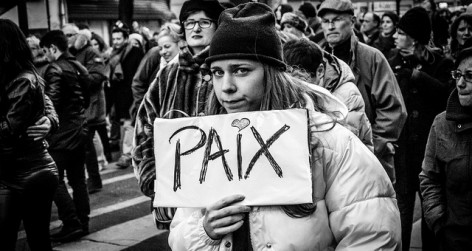
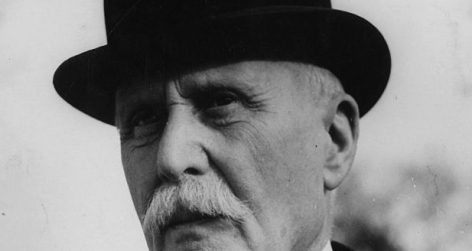
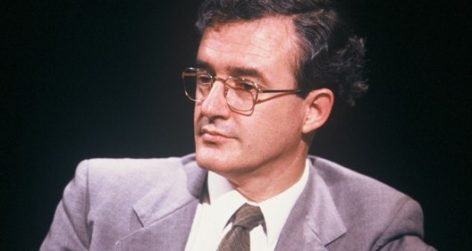
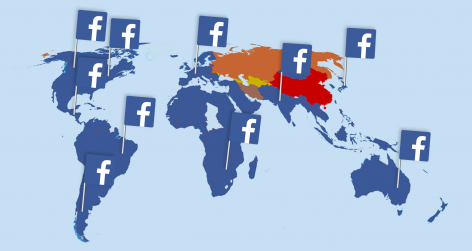
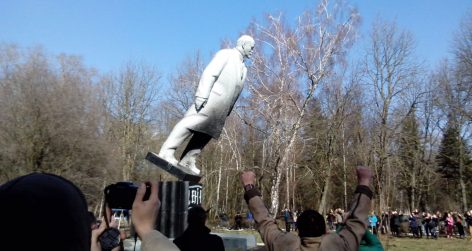
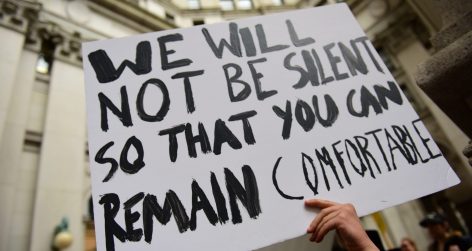

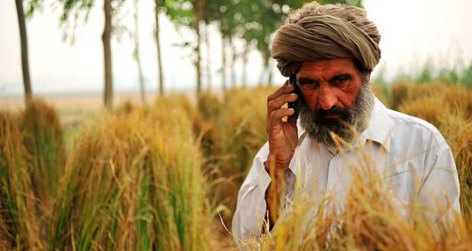
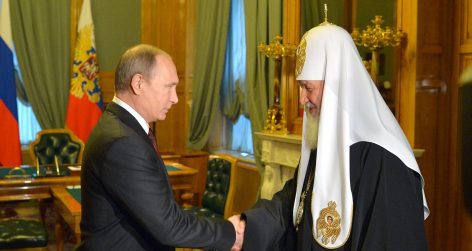


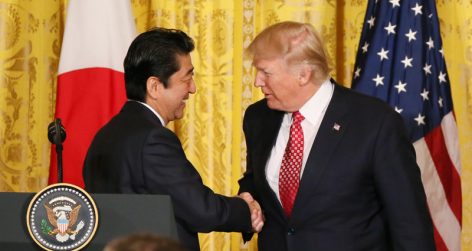
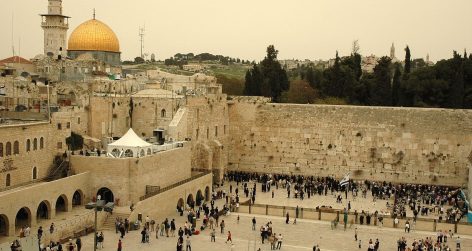

reply report Report comment
Dear Ms. Bruce-Lockhart,
In our IB English Language and Literature course, we have been discussing the complex issue of freedom of expression. We realize that the borders between hate speech and dangerous speech are obscured and muddled. We believe that, although these two specific cases demonstrate dangerous speech and should be punishable by law, we should be careful not to
sacrifice the right to express our opinions, as seen in the case of Geert Wilders.
Of Susan Benesch’s five key qualitative variables, perhaps the most important one is “whether or not the speech act is understood as a call to action.” We believe that this is pivotal in separating utterances into those that should be punishable, and those that should be protected by the ideals of free speech. In her paper “Dangerous Speech: A Proposal to Prevent Group Violence”, Benesch goes into more detail about how to judge this criterion:
Did the speech describe the victims-to-be as other than human, e.g. as vermin, pests, insects or animals?
Did the speech assert that the audience faced serious danger from the victim group?
Did the speech contain phrases, words, or coded language that has taken on a special loaded meaning, in the understanding of the speaker and audience?
In Kenya, Joshua Arap Sang used his radio show Le Ne Emet, to communicate with the native Kalenjin and to spread hate messages against the Kikuyu, Kambas and Kisiis, such as:
“the mongoose is at the chickens”
“the people of the milk should clear the weeds from the grass”
Sang instructed listeners to burn properties in Eldoret belonging to non-Kalenjins by saying, “let’s not destroy our own”
Sang’s language shows how he monitored the violence through these coded metaphors. It seems to fall under all of Benesch’s criteria to be classified as dangerous speech. The victimized minorities are referred to as weed that must be cleared. Sang makes it clear for the Kalenjins that they are the “people of the milk” that need to take action against Kikuyu, Kambas and Kisiis, by destroying their property for example.
We agree that “perpetrators of dangerous speech must be held accountable”, but although Sang’s discourse seems to fall under the category of dangerous speech, the results of his ongoing trial in the ICC remain far from definite. Language surely can incite violence, but the complex nature of dangerous speech, having these shady borders, makes judging it a difficult task.
Contrast this to the case of Geert Wilders, a Dutch right-wing politician who was recently acquitted of inciting hatred against Muslims. According to Wilders, “Islam is not a religion, it’s an ideology, the ideology of a retarded culture” and “the Koran is a fascist book which incites violence. That is why this book, just like [Adolf Hitler’s] Mein Kampf, must be banned.” This is where the boundary of hate speech and dangerous speech becomes highly debatable.
Wilders does not specifically launch an attack on Muslims, but on their religion and their culture. According to him, “It’s not my intention to have anything at all to do with violence. On the contrary, I despise violence – I just want a debate.” His call to “get rid of that woman-humiliating Islamic symbol” (the veil), cannot be classified as a call to violence.
So it is clear that Wilders does not fall under what Benesch calls ‘dangerous speech’. But is he not provoking discrimination against Muslims? We believe that Wilders has the right to express his opinion, even if we might not agree with it. If Wilder’s actions become punishable by law, the slippery slope may continue, and the whole notion of free speech will be jeopardized. In Wilder’s words, “I am on trial, but on trial with me is the freedom of expression of many Dutch citizens”.
On the other hand, in the Rwandan case, some phrases that were broadcasted by the RTLM transcend the blurry margin and are obviously dangerous speech:
“You have to kill [the Tutsis], they are cockroaches…”
“All those who are listening to us, arise so that we can all fight for our Rwanda… Fight with the weapons you have at your disposal… We must all fight [the Tutsis]; we must finish with them, exterminate them, sweep them from the whole country… There must be no refuge for them, none at all.”
“I do not know whether God will help us exterminate [the Tutsis] …but we must rise up to exterminate this race of bad people… They must be exterminated because there is no other way.”
This ticks all of Benesch’s boxes. Undoubtedly, freedom of speech should not allow these crimes against humanity to go unpunished, and we believe that the life sentences that some of the members of RTLM were given are just.
Although we agree that “to prevent dangerous speech, perpetrators must be held accountable”, we always run the risk of giving over to the emotional sensibilities of the victims and restricting freedom of expression to save them from discrimination rather than bodily harm. It is difficult to draw boundaries on what should and should not be allowed, and Benesch’s variables do help, but in order to protect the ideals of freedom of expression, it is essential that these boundaries are agreed upon soon, before the slippery slope continues.
Sincerely,
A. Serbetsoglou, A. Strating, E. Zomer
reply report Report comment
Dear A. Serbetsoglou, A. Strating, E. Zomer,
Thank you very much for your comments. As you point out, some cases of dangerous speech are much more clear cut that others. The role of RTLM in the Rwandan genocide is certainly one of the clearest cases of dangerous speech, while those of Sang and Wilders are more contested. Sang’s trial at the ICC is a very important test of the boundaries of dangerous speech, and it will be interesting to see how his defence and the prosecution against him unfold. Ultimately, as you suggest, more clear boundaries between hate speech and dangerous speech are necessary, both to protect freedom of expression and to prevent violence.
You can find more on the Wilders case on the website: http://freespeechdebate.com/en/case/geert-wilders-on-trial/
reply report Report comment
Many thanks for this very thoughtful comment. We will pass it on to Katherine Bruce-Lockhart, who I hope will feel able to respond.
reply report Report comment
Hello there Mrs. Katherine Bruce-Lockhart,
We are a group of students in an English language and literature class currently working on language and taboo. We have read your piece and we agree with the main points. We believe that there is indeed a thin line between free speech and hate speech but we too are struggling with determining how, when and why hate speech “serves as a springboard to violence.” However a point raised during our discussion was about how you draw the line between hate speech and dangerous speech.
You define dangerous speech as speech that incites violence against a group and hate speech as speech that denigrates people on the basis of their membership in a group. That raises the questions then: should dangerous speech be punished when it does not incite violence? Or would that just be considered as hate speech? However hate speech could also hurt a person or a group of people to the point that they commit suicide. Take the case of eleven year-old Carl Joseph Walker-Hoover, who killed himself after enduring months of anti-gay bullying at his school in Springfield, Massachusetts. Should that form of hate speech be punished?
We believe that dangerous speech always starts with forms of hate speech and if restrictions were applied on hate speech, we could prevent it from developing into
dangerous speech that incites violence and provokes deaths. One could argue that the Rwandan genocide could have been prevented if the ICC had stepped in when the hate speech towards the Tutsi’s began. Therefore from the very start of the conflict, where the media was dehumanizing the Tutsi’s or the Kalenjin people by using statements such as “cut the grass” or calling them names such as cockroaches (‘inyenzi’).
‘If the radio had not declared things, people wouldn’t have gone into the attacks”
If hate speech aims to attack the reputation of a person or group of people, than most forms of hate speech are indirectly promoting violence and should be classified as forms of dangerous speech.
How far do free speech laws go in protecting people that are spreading hate speech? You can’t really make laws that deny people expressing their opinions.
You argue that dangerous speech should be analyzed by looking at factors such as the level of a speaker’s influence, the grievances of the audience, whether or not the speech is understood as a call to violence, the social and historical context and the way in which the speech is disseminated. But how do you determine whether or not a speaker has enough influence to affect action, and when looking at factors to do with those listening to the speech, we consider it impossible to make a generalization because different people will have different views.
The fact that we can not make a generalization is supported by the fact that different countries have different legal views on hate speech. Kenan Malik, describes the inconsistency of the hate speech laws in different countries: Britain bans abusive, insulting, and threatening speech. Denmark and Canada ban speech that is insulting and degrading. India and Israel ban speech that hurts religious feelings and incites racial and religious hatred. In Holland, it is a criminal offense deliberately to insult a particular group. Australia prohibits speech that offends, insults, humiliates, or intimidates individuals or groups. Germany bans speech that violates the dignity of, or maliciously degrades or defames, a group. And so on. In each case, the law defines hate speech in a different way.
Here in The Netherlands, a quite controversial debate went on in 2011. Stated in a BBC news article, far-right politician Geert Wilders, who described Islam as “fascist”, was acquitted of inciting hatred against Muslims. According to the judge, Wilders’ comments on comparing the Koran to Hitler’s Mein Kampf were “acceptable within the context of public debate.” Although the speeches given by this political figure have said to have caused increasing hatred and violence towards the Islamic society in the Netherlands,
the Geert Wilders trial is an example of how people in the Netherlands have recently become more tolerant of differences in opinions. This allows people to express how they feel about specific things but can also be harmful to certain groups as it allows expressing hate towards a social group. Only the police and the queen are protected against any forms of hate speech.
Therefore we have come to believe that hate speech is a form of free speech. However there should be clear line between hate speech and dangerous speech, and we should apply restrictions to all forms of dangerous speech. Even though hate speech also incites violence we believe that there must be a difference between the two and in order to determine this difference we need to look at the specific factors.
We hope to get a favourable response from you!
Your fellow readers.
reply report Report comment
Thank you very much for your comments and discussion of these important issues. You raise some of the key quandaries in the debates on hate speech and dangerous speech that have yet to be fully answered. As you discuss, there is not a universally recognized definition of dangerous speech, and the understanding of dangerous speech changes greatly depending on the socio-historical context. In the cases I examined, the type of speech employed was arguably ‘dangerous speech’ using Benesch’s criteria. I find her framework very useful, but it is one approach and certainly other approaches can be explored. More work is needed to define what exactly constitutes dangerous speech and how it is different from hate speech.
I recommend that you look at this video of a United Nations panel on the topic of dangerous speech. It raises many interesting questions about the differences between hate speech and dangerous speech, and also examines how we should limit dangerous speech in order to prevent violence. http://www.worldpolicy.org/blog/2013/02/06/lets-talk-about-genocide
reply report Report comment
Hello, we are three students from the American School of the Hague taking a Language and Literature course. We have currently been studying hate speech and taboo, and we’re interested in exploring the influence of the social-historical background of a country and how it allows hate speech to become dangerous speech. Hate speech should therefore be persecuted, during periods in which a country is experiencing severe grievances and the speech calls for direct action against a particular group.
This applies to the case of Kenya in 2007. After the country’s presidential elections in late 2007, in which the winner was Mwai Kibaki of the Party of National Unity (PNU), violence spurred between PNU supporters and the Orange Democratic Movement supporters (ODM). At this time, Kenya was experiencing high crime rates. Stated from The New York Times, gangs were forcing their way into homes “dragging out people of certain tribes and clubbing them to death,” as the ODM’s supporters believed the election had been rigged against their leader. This intense tension between the political and ethnic groups created fertile ground for the outbreak of violence.
Joshua Arap Sang, the KASS FM radio broadcaster, is in trial in the International Court of Justice in The Hague, along with William Samoei Ruto, the Deputy President of Kenya, for crimes against humanity. Sang is a quintessential player in the 2007-2008 Kenyan crisis and is convicted of spreading hate messages, broadcasting false news to incite the Kalenjin people. Sang is an ODM supporter, and Ruto used Sang’s role as a radio broadcaster to collect supporters and to create codes so Sang’s listeners would know when to attack the rival ethnic group, Kikuyu. The ICC has charged Sang and Ruto of crimes against humanity in three subtopics: murder, forcible transfer of people, persecution of an ethnic and political groups and crimes of rape and sexual abuse.
Sang’s role in the Kenyan crisis has parallels with Joseph Goebbels, the Minister of Propaganda in Hitler’s Third Reich. There seems a direct correlation between Hitler’s rise to power and the socio-economic despair that Germany experienced due to the Great Depression, according to historian Robert Gellately. Goebbels exploited the social and economic situation through means of film, art, posters, etc, to rally support for the Nazi Party and hence the support for their anti-Semitic cause, just as Joseph Sang used his radio to gather support for the ODM and hatred for the PNU. Both reached a desperate population that incited them to target their rivals.
Goebbels, an avid supporter of the Nazi Party, was in charge of modern propaganda to rally support but also galvanize anti-Semitism. In fact, Goebbels’ propaganda program incited Kristallnacht, where Jews were purged from German society and synagogues were destroyed. Furthermore, Goebbels used film to make the most anti-Semitic movies, increasing the hatred of the Jewish population and thus making the German population accept and encourage the deportation and deaths of six million Jews.
Both Goebbels and Sang used a scapegoating technique where they targeted an ethnic population and blamed them of all the problems people which they were facing. In Germany, the Jews were blamed for the start of the Great Depression, and were labeled as rich people while the rest were suffering extreme poverty. In Kenya, the Kikuyu were dominant in politics and so the Kalenjin held them accountable for everything that was wrong. Scapegoating creates abhorrence for a targeted population which makes it easier to incite violence towards them. This is what exactly occurred in both the Third Reich and in Kenya in 2007.
Sang’s radio station RTLM, gained an audience of four and half million quotidian Kenyan listeners. Amnesty International states that Eldoret, where his radio was based, “was a scene of some of the worst bloodshed”.
Coincidence? We think not.
Audience plays a major role in hate crime. This influences the switch from hate speech to dangerous speech because it allows for words to morph into action. As the ICC’s official statement puts it, “Sang was using his radio program to collect supporters and provide signals to member of the plan on when and where to attack,” especially targeting citizens who didn’t have access to other forms of media. This allows for RTLM to give a biased view to the people who are less educated, as Katherine Bruce-Lockhart says.
Yes, Sang will argue that he can’t be convicted under free speech but he is using language to manipulate his audience, ultimately turning them to violence. This seems more plausible in a nation that suffers from interethnic rivalries.
Hate speech will turn into dangerous speech when the social and historical context calls for it. Sang exploited popular discontent among the Kalenijn ethnic community (whom supported ODM) and took advantage of this troubled social situation to encourage aggression against the PNU supporters. He used his radio to clearly organize the crime and rally up supporters – a manifestation of his deliberate intention to incite violence.
reply report Report comment
Thank you very much for your comments. It is certainly important to consider historical examples of dangerous speech and the case of Goebbels and Nazi propaganda is an extreme one. At this point, we know much more about the extent of dangerous speech in Nazi Germany than we do in Kenya. As Sang’s trial unfolds, we will hopefully understand more about his role in the post-election violence. Certainly, his case is less clear cut than that of RTLM in the Rwandan genocide and the use of propaganda in Nazi Germany.
reply report Report comment
The Thin Line Between Hate Speech and Dangerous Speech
We are three students high school students in the I.B SL Language and Literature class studying the implications of hate speech.
The difference between hate speech and dangerous speech has been an increasing discussion topic as we become more aware of the power of language, and its dangers. Katherine Bruce-Lockhart states the difference between hate and dangerous speech and how determining that difference is pivotal in bringing offenders to justice. Dangerous speech leads to horrible acts of violence as seen in the Rwandan Genocide, where it is estimated that around forty-five thousand deaths were incited by the speeches broadcasted by Radio RTLM. The problem is that in many cases it is not so clear whether it is dangerous speech or just hate speech because of the difficulty in defining dangerous speech. It is that difficulty that makes the prosecution of perpetrators of hate or dangerous speech so difficult, as seen in Joshua Arap Sang’s ongoing trial. The difference of dangerous speech and hate speech is more complicated than what the article suggests, thus making it more difficult to set legal boundaries to bring perpetrators of such acts to justice.
The article expresses dangerous speech as “speech that has a “reasonable chance of catalyzing or amplifying violence by one group against another.” The differences that they decided differentiates one from another is one whose connotations imply violence. When looking at how the article distinguishes hate speech from dangerous speech, they do not take into account the context and the meaning that is behind the speech. In the case of athletic chants, the boundaries that the article set do not fit. The words that may be used in some chants, the word’s connotations may “ amplify violence”, however, the denotation do not. As seen in the example of a game between Notre Dame ( The Fighting Irish) and North-Western (Wildcats), the Wildcat fans were chanting “ Kill the Fighting Irish, kill the Fighting Irish”. The denotation of the work “kill” is to cause death however in the context its meaning does not imply violence of any kind.
The Westboro Baptist Church (WBC) has been gaining notoriety as news spread of their picketing of funerals of U.S soldiers, politicians and even children. WBC protesters stand outside holding signs with the words”Thank God for IEDs”, “You are going to hell”, “Pray for more dead soldiers”, “Thank God for dead soldiers”. The message that WBC conveys is one of complete hatred towards homosexuals and of those who accept them, their protests have been so hateful, so offensive that hundreds of thousands of people have brought their protests up to the Supreme Court in the hope that something will be done to stop the protests. WBC protesters are clearly engaging in hate speech, but because it doesn’t incite violence or create a dangerous situation it is not considered dangerous speech, and therefore are not doing anything illegal. We believe that the protests have no objective other than to offend and insult those who support homosexuals, and therefore those WBC protesters should not be protected by the 1st amendment and be held against the law.
We understand how difficult it is to legally set laws that prohibit dangerous speech. People interpret things in different ways which would make the laws that are placed, subjective rather than objective. There should be no legal boundaries put on hate speech, since it goes against the right of free speech. Also, when laws do prohibit hate speech, certain people might interpret the hate speech differently. However, there is an exception. Speech that causes imminent danger or speech that leads to someone taking dangerous action could and should have legal boundaries.
When laws are created that ban other forms of hate speech, it does not reduce or eliminate that hate speech, it does the opposite. Kenan Malik says, “ you cannot reduce or eliminate bigotry simply by banning it.” The example he uses to support this is the example of Britain prohibiting incitement to racial hatred in 1965. When the Race Relations Act was passed, the next decade in British History was the most racist in British history, despite the fact that racial hatred was prohibited. When Britain’s laws were revoked and time had passed, racism decreased. This is because of the social changes that happened. Another example that supports Kenan Malik’s argument is the Westboro Baptist Church. Many countries have banned the bigotry that the Westboro Baptist Church uses, yet they continue to do it. The Westboro Baptist Church members are banned from entering both Britain and Canada because of their bigotry, but they keep picketing at places such as public funerals.
In the case of Snyder v. Phelps (Phelps is the leader of the Westboro Baptist Church) the Supreme Court of the United States has ruled that speech on a public sidewalk, about a public issue, cannot be liable for a tort of emotional distress. They made this ruling because the WBC’s protests do not explicitly cause imminent danger nor are their protests calls to a dangerous action. The WBC’s protests are considered hate speech, not dangerous speech. This supports that people interpret hate speech differently and laws that are imposed on free speech become subjective. That is why legal boundaries should not be imposed on speech unless it causes imminent danger or is a call to a dangerous action.
The article’s idea that dangerous speech is one that incites violence towards others is over simplistic as it does not take into account the context and connotations of the speech. During the game Notre Dame against North-western the fans who shouted the chant would be considered criminals according to the article, which is quite ridiculous. The chant is clearly not a call to violence towards the opponents, but rather an attempt to support their team. The difference between hate and dangerous speech is so small, making it really difficult to define.
reply report Report comment
Thank you very much for your comments. It is certainly true that defining the boundary between hate speech and dangerous speech is extremely difficult. I agree that more work must be done in order to delineate this boundary more carefully, as I mentioned at the end of my article.
As you say, not all cases of hate speech can be considered dangerous speech, as I mentioned in relation to the Westboro Baptist Church. I find Susan Benesch’s framework on dangerous speech to be the most useful for determining whether or not speech can be considered dangerous. The case of the sports game between the Fighting Irish and Notre Dame is an interesting one, but as you say, very different from the Rwandan genocide or the post-election violence in Kenya. I would argue, as you do, that this case would not be considered ‘dangerous speech’ using Benesch’s definition. She uses many variables to determine whether speech is dangerous or not. As listed in the article, these include: the level of a speaker’s influence, the grievances or fears of the audience, whether or not the speech act is understood as a call to violence, the social and historical context, and the way in which the speech is disseminated. Thus, context is very important, as you suggest, and this is something taken into consideration in Benesch’s framework and in the cases of Rwanda and Kenya. The fans in the sporting game would thus not be considered criminal using Benesch’s framework.
Ultimately, as you suggest, it is imperative that the line between hate speech and dangerous speech is more carefully drawn. It is crucial to keep on having these debates in order to further our understanding.
I also recommend that you read the case study on the Westboro Baptist Church available on this website, as it may provoke more critical discussion and debate: http://freespeechdebate.com/en/case/westboro-baptist-church-the-right-to-free-speech/
reply report Report comment
This is an interesting piece. My question would be: You mentioned the Kass FM rhetoric was in response to a perceived rigged election where most Kalenjin identified with candidate Raila Odinga. Do you think the way in which Odinga encouraged protests against the election count as inciting hatred? We can understand why Ruto and Kenyatta were indicted on suspicion of directly organising violence, but if Arap Sang is on trial for stirring things up vocally, surely Odinga fits the same category?
reply report Report comment
The first problems occurred in this situation we must confirm is that hate speech definitely not a type of free speech. There is no doubt that the boundary of freedom owned by a person couldn’t hinder the freedom of other people.
That means: Everyone has right to express himself, and should protect other right equally. To hurt others can not get free, but detain own soul.